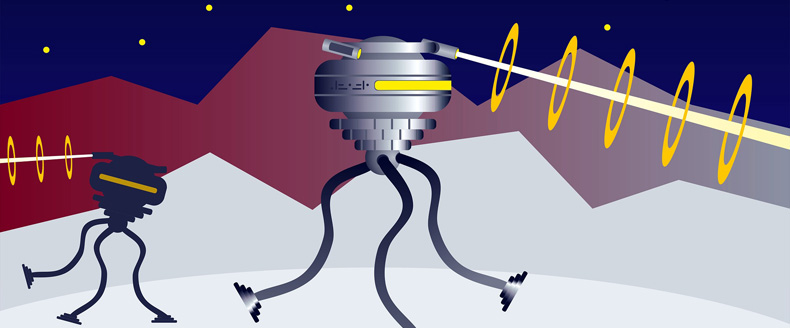Strategic bombing, by a rebel group, via drone: welcome to the 21st century. Just today, we learned that Yemeni Houthi rebels planned and launched what was obviously a carefully targeted attack on Saudi Arabian oil facilities. The explosions and resulting fires at refinery or transport hubs have shut down half the country’s oil production — around five million barrels of crude oil per day, or about five percent of WORLD oil production.
According to Slate, “A military spokesman who gave a short address that was aired by the Houthi’s satellite news channel said 10 drones carried out the coordinated attack.” Ten drones! I’d love to know whether they dropped bombs or were the bombs themselves, acting as un-crewed kamikazes. Either way, they must have carried a ridiculously small payload, a few tons in total at most and probably much less. But when you put the right explosive in the right places, it can dent the world output of the most important commodity in our industrial economy.
By contrast, when the U.S. Army Air Force first tried to knock out oil production in the Romanian city of PloieÈ™ti in 1943, it sent 177 heavy bombers, each carrying a couple of tons of bombs. Fifty-three did not return, along with over 600 men, and the raid barely slowed the flow of Romanian oil to Nazi Germany. Further attacks cost another 200+ planes and over 2000 men, but PloieÈ™ti’s oil supported the German war machine until the Soviets overran the city in 1944.
We’re seriously entering science-fiction territory with today’s news. Without risking a single pilot, non-state actors without vast resources can now use technology widely available on the civilian or military markets to wage strategic war against the economic foundations of their enemies’ economies. Venezuelan rebels tried to get President Maduro with drones a couple of years ago, but they employed small consumer models in a poorly delivered attack against one person. The Houthis just showed what a serious drone war might look like.
Let’s make the analogy to digital politics: the internet lets groups of all sizes act like big players when it comes to pressuring politicians, mobilizing citizens and electing people to office. What do the liberal blogosphere around the time of the Iraq invasion, Ron Paul’s 2008 online partisans, Occupy Wall Street, the Bernie bros and the rise of the digital alt-right have in common? They all demonstrated the power of relatively small groups of people to influence and even dominate public discussion, often way out of proportion to their actual popular support. On the internet, no one knows if your movement is a dog, particularly if you have a loud bark.
Like the political internet, drones are a leveling technology, erasing many of the advantages that large or well-funded opponents enjoy. Not surprisingly, defense companies are scrambling to produce and sell counter-UAV technologies, ranging from electronic jamming to anti-drone drones to guns, missiles and lasers. The U.S. military already employs drones from the infantry-squad level all the way up to strategic reconnaissance craft the size of small airliners, as do peer competitors like China and Russia — soon, anything that can be seen can be shot.
Meanwhile, small drones will soon be as much a part of civil strife around the world as the AK-47. Next up: street gangs relying on robots to monitor their rivals, or just to bomb them? Once again, the technology does not care who uses it, and humans will always apply it in ways never imagined by its creators. Science fiction, indeed.
For more about the use of drones in conflict around the world, check out my Drone War Journal twitter feed.
– cpd

